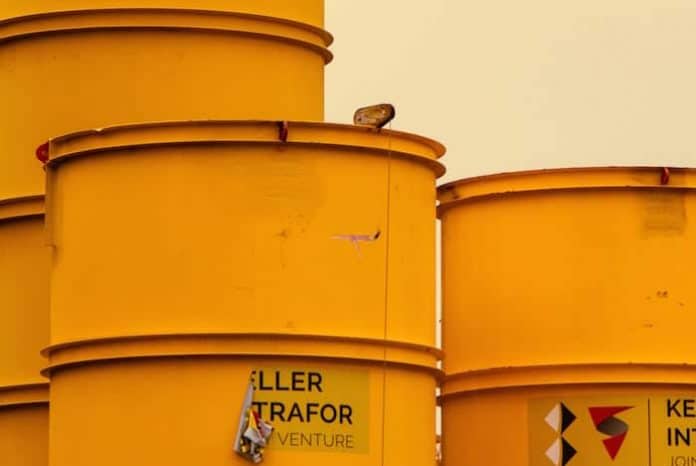Just as a friendly reminder, stainless steel is a group of iron-based alloys, which feature a minimum of 10% chromium. This product is so commonplace that we rarely acknowledge it. Regardless of what you do during the day, chances are that you’ll come across stainless steel. We’re heavily dependent on it. Pressure vessels, for private or industrial uses, use different types of steel, particularly stainless steel, which are welded together so as to manufacture cylinders or spheres. They are designed to contain liquids and gases at high-pressure values. Stainless steel pressure vessels are becoming more and more popular across the globe owing to the many advantages that they bring about. If you’re curious to find out more, please continue reading. These benefits may apply to your situation.
Using stainless steel manufactured pressure vessels increases the chances of success
Great structural integrity
Stainless steel pressure vessels can withstand their intended loading without failing due to deformation, fracture, or fatigue. This structural integrity is given by two very important factors: high strength and high durability. You see, stainless steel is more resistant to corrosion as opposed to ordinary steel. When it’s subjected to air, steel reacts with oxygen to form rust. The chromium present in the mixture acts as a protective layer against corrosiveness. This reduces the need for maintenance and improves the service life. Thanks to recent advancements in technology, it’s now possible to develop various types of steel and stainless steel that meet specific requirements.
Achieving liquid tight welds
Even if stainless steel is a sturdy material, it can be made to the desired shape. During the welding process, to prevent thermal cracking, impurity elements are eliminated from the steel. Experienced manufacturers take precautions to avoid leakage by testing every product that comes out of the production line. Additional testing may include a penetrant examination. Glacier Filtration makes available pressure vessels that are reliable in terms of design, construction, performance, and durability. There’s no question of holes, leaks, cracks, and so on, as the products meet and even exceed industry specifications. To contact Glacier Filtration, Australia’s leading manufacturer of pressure vessels, click here.
High economic value
Stainless steel is capable of maintaining its properties over time, particularly at low-temperature ranges. Pressure vessels manufactured using this material are highly economical. With proper maintenance and handling, they can last for a very long time and enjoy cost-efficiency. The extended life span spares the owners the cost of acquiring new pressure vessels on a regular basis. An ever-increasing number of manufacturers are choosing to build stainless steel tanks over carbon steel tanks because they require little to no maintenance and there’s no need for extensive refurbishment. Stainless steel material grades have advanced in recent years, which means that they can be customized to specific needs.
Types of stainless steel pressure vessels, according to application
Pressure vessels work by reaching the level of pressure required to make an application function, such as using compressed air to bear down on the water. They are dangerous, which means that accidents can take place. In the design process, close attention is paid to temperature, corrosion allowance, not to mention the safety factor. Stainless steel pressure vessels are commonly used in the chemical, gas, and oil industries. They are deployed for compressed air receivers, recompression chambers, distillation towers, autoclaves, and diving cylinders. High demand for pressure vessels leads to a high turnaround time for production, therefore driving market growth. Although composite materials are gaining in popularity, steel remains the star material.
There are three common types of stainless steel pressure vessels, each serving a different purpose but making a significant contribution in terms of production.
Storage vessels
Storage vessels, which range from low-performance tanks to high-performance containers, are used for the accumulation of oil, liquids, and produced water. They are cylindrical in shape and feature a floating or fixed roof. Needless to say, environmental regulations apply to industrial operations, which ultimately impact the design of the storage vessels. You can encounter above-ground storage tanks, as well as underground storage tanks. The pressure vessels come in many sizes, which are established by rules of thumbs. Types of storage vessels include but aren’t limited to thermal storage tanks, water tanks, and septic tanks. For more detailed information on how these vessels can benefit your specific application, read on about industrial storage tanks.
Heat exchangers
Heat exchangers have facilitated modern processing and manufacturing, which we’re all grateful for. The systems work by transferring heat between 2 or more fluids. They are usually separated by a wall to prevent mixing. Heat can be destructive, which is why it needs to be reused or removed to eliminate this troubling concern. Heat exchangers turn out to be useful in this sense, operating at peak efficiency for long periods of time. Common applications are power stations, space heating, and natural glass processing.
Process vessels
Process vessels are designed for blending, separation, cooling, purification, and changing a material’s state. They may be connected to other processes horizontally or vertically. These pressure vessels can withstand high temperature and pressure, meaning that they’re immensely useful. Industries that deploy process vessels include food and drug manufacturing and refineries. This doesn’t include tanks used for storing materials previous to introducing them into the production process or storing finished products.
Final considerations
To ensure that stainless steel pressure vessels are engineered to perform at perfection and withstand the test of time, only state-of-the-art materials are utilized. This way, the highest quality of design is attained and the stainless steel pressure vessels are ready to leave the manufacturing facility. Regardless of the industry that they serve, stainless steel pressure vessels play a very important role in society. They are the primary components of tools and machines needed to make sure that things go well. Liquids and gases can be contained without putting anyone in danger. If you’re thinking about using a stainless steel pressure vessel, look into the appropriate codes to understand the actual requirements. The rules vary from country to country and from state to state. What is more, it’s necessary to take the necessary actions to prevent safety hazards.
Find a Home-Based Business to Start-Up >>> Hundreds of Business Listings.

















































